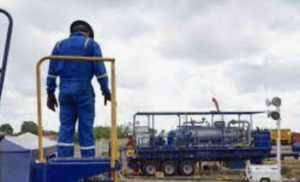The latest Baker Hughes Rig Count reflects steady drilling activity across most major U.S. oil and gas plays, with only slight fluctuations in specific basins. As oil prices hover around critical thresholds and operators focus on efficiency, the rig count provides valuable insight into the health of the industry. Below is a breakdown of the key numbers from the latest report.

Permian Basin Remains Strong
- Rig Count: 304 (unchanged)
- Region: West Texas and Southeast New Mexico
The Permian Basin, the powerhouse of U.S. oil production, continues to dominate with 304 active rigs. With no change from the previous week, the focus remains on maintaining production levels and optimizing existing wells.
Stable Activity Across Major Basins
- Williston Basin (ND & SD): 34 rigs (unchanged)
- Eagle Ford (South Texas): 49 rigs (unchanged)
- Granite Wash (Oklahoma & Texas Panhandle): 4 rigs (unchanged)
- Ardmore Woodford: 2 rigs (unchanged)
- Arkoma Woodford: 2 rigs (unchanged)
- Marcellus (Appalachia): 23 rigs (unchanged)
- Mississippian: 0 rigs (unchanged)
- Utica: 9 rigs (unchanged)
Most of these plays saw no change in rig activity, reflecting stable operations as companies monitor market conditions. Notably, the Eagle Ford and Williston Basin continue to hold steady, underscoring operators’ long-term focus on efficiency rather than rapid expansion.
Minor Reductions in Haynesville and Cana Woodford
- Haynesville (LA & East TX): 33 rigs (down by 1)
- Cana Woodford: 21 rigs (down by 1)
The Haynesville Shale, a major natural gas play, recorded a small decline of one rig, bringing the total to 33. Similarly, the Cana Woodford in Oklahoma saw one rig come offline, leaving 21 in operation. These minor reductions suggest some companies are pulling back slightly in response to market conditions, such as fluctuating gas prices.
Industry Outlook: Steady as She Goes
The latest report reflects industry-wide stability, with minimal shifts in rig activity. The steady numbers across most basins indicate that companies are focused on maintaining current production rather than pursuing aggressive drilling programs. Declines in the Haynesville and Cana Woodford could signal early responses to price volatility in the natural gas sector, but overall, the industry appears to be holding firm.
As operators continue to assess economic conditions and optimize their drilling strategies, we may see incremental changes over the coming weeks. For now, this week’s rig count serves as a sign that the U.S. oil and gas sector is maintaining a measured approach to exploration and production.
Conclusion
The latest Baker Hughes Rig Count highlights a relatively quiet week in U.S. oil and gas drilling, with stability across key basins and only slight pullbacks in natural gas-heavy areas. As the market continues to adjust to external pressures, including fluctuating prices and geopolitical developments, keeping an eye on future rig count reports will be crucial for understanding industry trends.
Stay tuned for next week’s update to see if the steady trend continues—or if market conditions spur new activity shifts.
Subscribe for Weekly Updates
Get the latest rig counts, production numbers, and industry trends directly in your inbox. Subscribe now to stay informed!

















